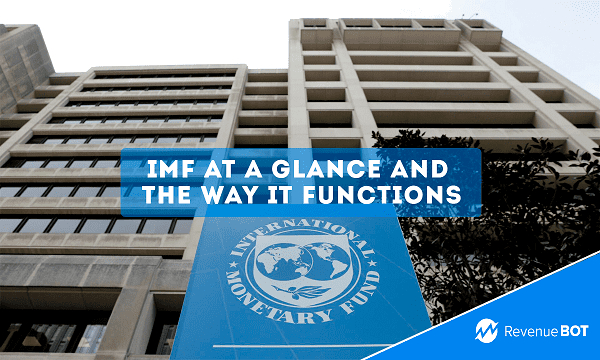
The world economy is always on the move. Amidst this chaos, however, there exists the International Monetary Fund, or IMF in short, an institution intended to maintain global financial stability and rescue countries facing tough economic times. This agency is a pivotal element of the global financial architecture which plays a crucial role in mitigating economic crises.

The IMF is among the key international financial institutions founded in the postwar period to ensure worldwide financial health and promote economic growth.
What exactly is the International Monetary Fund?
IMF is a multi-faceted organization established after World War II to encourage global financial strength, facilitate international trade, and advance economic cooperation. For both developed and developing countries, the IMF is at the center of the global financial architecture, and its role is of great importance.
The agency was created in 1944 during the Bretton Woods conference held in the United States. At that particular conference, 44 countries adopted an agreement that laid the foundations of the organization. The IMF’s main purpose was to prevent default of balance sheet obligations owed to other countries, to maintain stable exchange rates, and to foster international trade.
Core functions
The IMF performs several key functions:
- Financial Assistance: The agency provides temporary financing (also called bridge financing) to countries suffering from financial distress. These kinds of loans are designed to maintain the balance of payments and restore economic stability.
- Economic surveillance: The organization oversees the economic policies of its members, cautioning against practices that could lead to imbalances.
- Capacity development: it also provides economic expertise and technical assistance to the agency’s members.
- Policy advice: The IMF assists countries in developing sound economic policies and reforms to stimulate growth.
Membership
At present, the IMF has 190 members, including virtually every country in the world. They all contribute to the organization and enjoy a certain number of votes at meetings. Decisions are made by majority vote.
So the IMF remains essential to promoting the sustainability and development of the world economy, while its functions and role keep evolving in response to its ever-evolving challenges and needs.
Governance structure
The governance structure of the International Monetary Fund is a sophisticated system that ensures the equality of the organization’s members and effective decision-making. Let’s delve deeper into how the IMF’s governance structure really works.

The Board of Governors
The IMF Board of Governors is the agency’s highest management body which takes major strategic decisions. It comprises 24 directors representing whole groups of countries. Governors are appointed by each included country according to their share of contributions to the fund. As a way of illustration, the US has the largest share of voting power and is therefore entitled to appoint a governor from their country.
Executive directors
The IMF’s Executive Director is a person appointed by the Board of Directors. Their primary task is to implement the policies and decisions made by the Board of Directors. They also serve as the IMF’s Chief Spokesperson in the world arena.
Dual-chamber voting system
IMF voting is based on a two-chamber system. The first one determines the votes of the national members of the organization, in proportion to their contributions. As for the second one, it gives each country a single vote, regardless of its contribution. Such a system ensures the fairness of all members while respecting their economic relevance.
Voting on important issues
Decisions related to crosscutting issues require a qualified majority vote. This means that a decision is only made with the majority of members representing the largest part of the total votes.
Governance reforms
Over the past few years, a series of efforts have been made to revamp the IMF’s governance structure to reflect changes in the global economy and the distribution of power. These include increasing the vote share of developing countries and more equitable representation on the world stage.
IMF’s view on crypto
Cryptocurrencies and central bank digital currencies (CBDCs) are now an integral part of today’s financial ecosystem.
The International Monetary Fund expresses concerns about the volatility and risks associated with digital money and their potential impact on global financial stability. So the agency calls for strict regulation of crypto markets and better investor protection.

The IMF recognizes the CBDCs’ potential to enhance settlements as well as to foster financial inclusion. It emphasizes that CBDCs should meet high security and transparency standards in order to ensure overall user confidence.
The issues surrounding digital currencies stay relevant and are still emerging. The Fund continues to observe this area closely and is now promoting the drafting of global regulatory frameworks for digital currencies to ensure their safe and stable use.
Conclusion
The International Monetary Fund plays a vital role in contributing to the worldwide economy. We have covered its background, its governance structure and its approach to digital currencies.
The IMF, as a multifaceted organization, provides an avenue for cooperation among diverse countries and financial support mechanisms in the event of a crisis. Its governance structure enables fair representation of IMF members and allows for effective decision-making.
In light of the lightning-fast development of digital currencies, the IMF is actively addressing the creation of regulation and standards for this novel form of money as it seeks to balance its potential benefits and risks.
